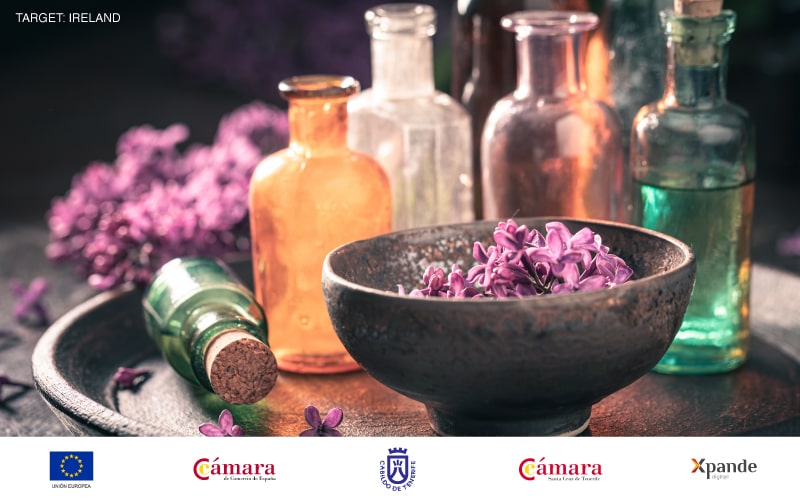Natural essential oils - concentrated extracts of plants that retain the aroma or flavor of the original plant - have gained popularity in recent years. In fact, in 2016, this industry was valued at around $7 billion, while in 2022 its market value reached nearly $22 billion, with an expected annual growth rate of 7.9% until 2030.
.
Furthermore, if you lead an eco-friendly lifestyle, you may have seen many influencers recommending or selling them, or you may have come across them as ingredients in homemade recipes for cosmetics, household cleaning, or even for the treatment of certain ailments.

So, if they are so wonderful and have such a promising future, why don't we sell them at LESS? Well, as we will see below, this growing demand is associated with considerable environmental risks (and in some cases, health risks) that do not align with the values we want to promote in our store.
This blog explores the ecological footprint of essential oils, shedding light on their cultivation, extraction methods and potential environmental, social and health implications.
1. Cultivation and Agriculture
To produce a small bottle of essential oil, enormous quantities of the plant are required. For example, to produce 1 kilogram of lavender essential oil, one of the most popular and "easier" to produce, around 150 kilograms of flowers are needed. This means that to obtain an average annual yield of about 14 kilograms of essential oil (assuming the plants are healthy and suitable for oil production), at least one hectare of land would be required.Imagine the amount of land and resources needed to produce more exclusive essential oils, such as rose oil, which requires 2 to 4 tons of petals to produce just one liter of essential oil.
Although fortunately, this is not always the case, large commercial brands obtain their raw materials from large monoculture plantations (where all available land is dedicated to cultivating a single species), a practice that can contribute to deforestation, loss of biodiversity, and soil degradation. In other cases, they are grown in controlled environments or greenhouses, which usually means higher energy use to regulate temperature and humidity conditions.
Moreover, it is not just a matter of space, but also the amount of water (lavender and rose, in particular, require a significant amount), pesticides, and fertilizer use, which can also contribute significantly to the environmental impact of the product. While some practices are better than others, no matter how ecologically friendly the cultivation may be, we cannot ignore the amount of natural resources required for the production of essential oils.
2. Pressure on Specific Species
Some popular essential oils, such as cedarwood or sandalwood, come from plants listed on the IUCN Red List of Threatened Species. An increase in demand for these products could further escalate the pressure on these species.
Furthermore, the planting of foreign species to meet market demand may pose a risk to native species, which can be displaced or even threatened, contributing to the loss of biodiversity.
3. Extraction Methods
The environmental impact of essential oils also depends on the extraction method used. The most common methods are steam distillation, pressing, rubbing, maceration, or extraction with volatile solvents like alcohol or chloroform, all of which are energy-intensive and/or require significant amounts of water.
4. Socioeconomic Reasons
One of the reasons why essential oils have become so popular among individuals is due to the marketing strategies of major companies that sell these products. Most of these large corporations operate through multi-level or network marketing, where anyone can become a distributor and is incentivized not only for direct sales but also for "convincing" others to become distributors.
We are not in favor of this business model because we believe it is unfair to the salesperson — who earns commissions from sales rather than their work, and it encourages irrational consumerism through aggressive marketing that contradicts our principles.
On the other hand, the fact that the industry is concentrated in a couple of large corporations makes it impossible for small producers (and they do exist) to compete on price, which perpetuates economic inequalities. Moreover, it is not surprising that these companies seek to improve their profit margins by sourcing raw materials or relocating production to developing countries, where wages are lower, conditions are worse and workers' rights are worse.
5. Toxicity
Just because they are natural does not mean they are harmless. Some essential oils are toxic to certain species (e.g., lavender oil is toxic to cats) and can even function as larvicides or natural insecticides. Many are highly flammable (lavender, tea tree, eucalyptus, etc.), and others can be dangerous to marine life. Therefore, special care should be taken to avoid contact with water sources (e.g., drains) or when disposing of empty containers.
Although all this information should be indicated on the label or on the product's website, this is not always the case and you should ask the brand to provide it.
In summary, if we adhere to a strict definition of sustainability, the production of essential oils is simply unsustainable. Therefore, we do not feel comfortable selling them or promoting their personal use. If, despite everything we have explained, for whatever reason, you still want to continue using essential oils regularly, at least consider the following factors:
1) Choose small brands with local and/or own production and, if possible, organic certification.
2) Use them responsibly: use up the ones you already have before buying new ones, store them properly so that they last longer, space their use and respect the dosages.
3) Select plant varieties that are less demanding to grow (e.g. lemon), require fewer resources to produce or simply occur naturally in your area (e.g. lavender or rosemary).
4) Explore more sustainable alternatives such as hydrosols (a byproduct of essential oil production with similar properties but more diluted), herbal infusions or dried herbs, which can provide aromatic benefits similar to essential oils but with less impact